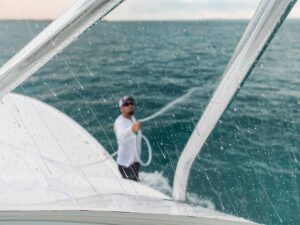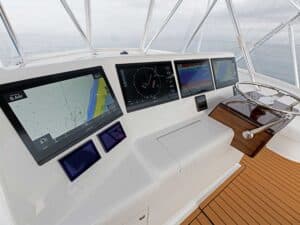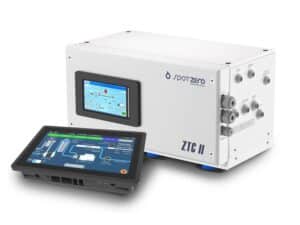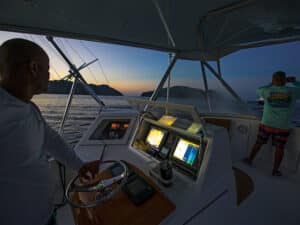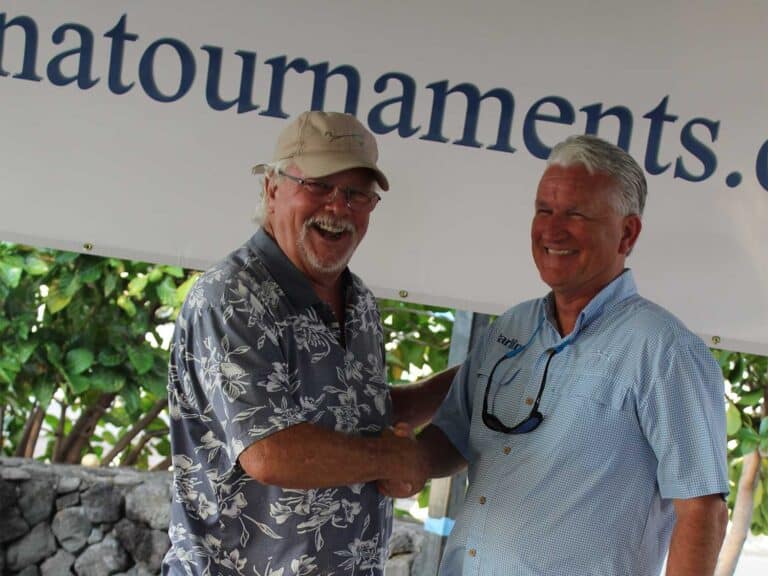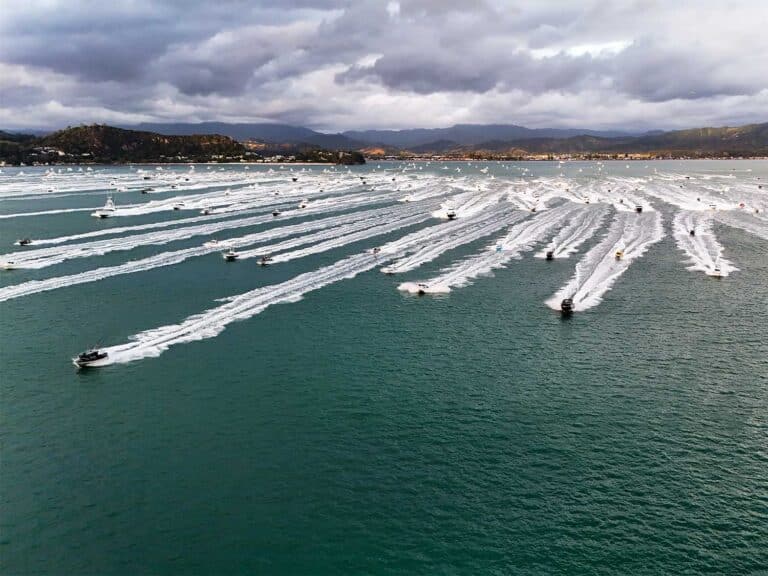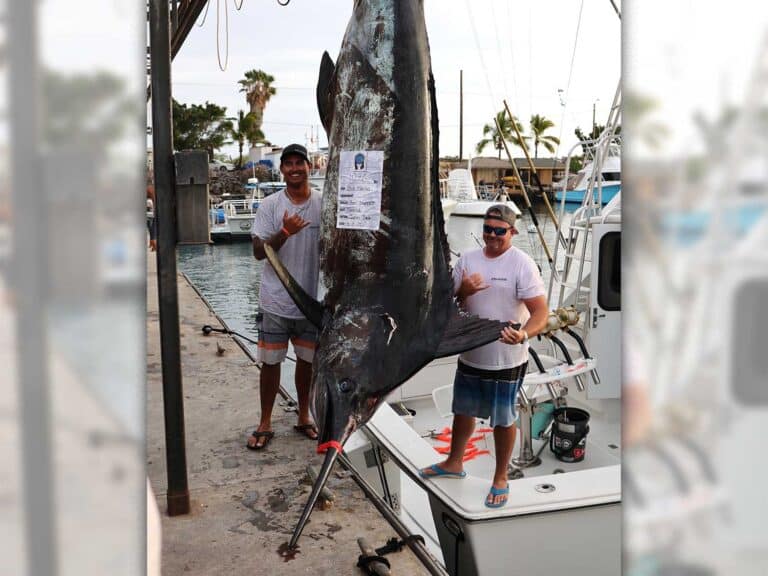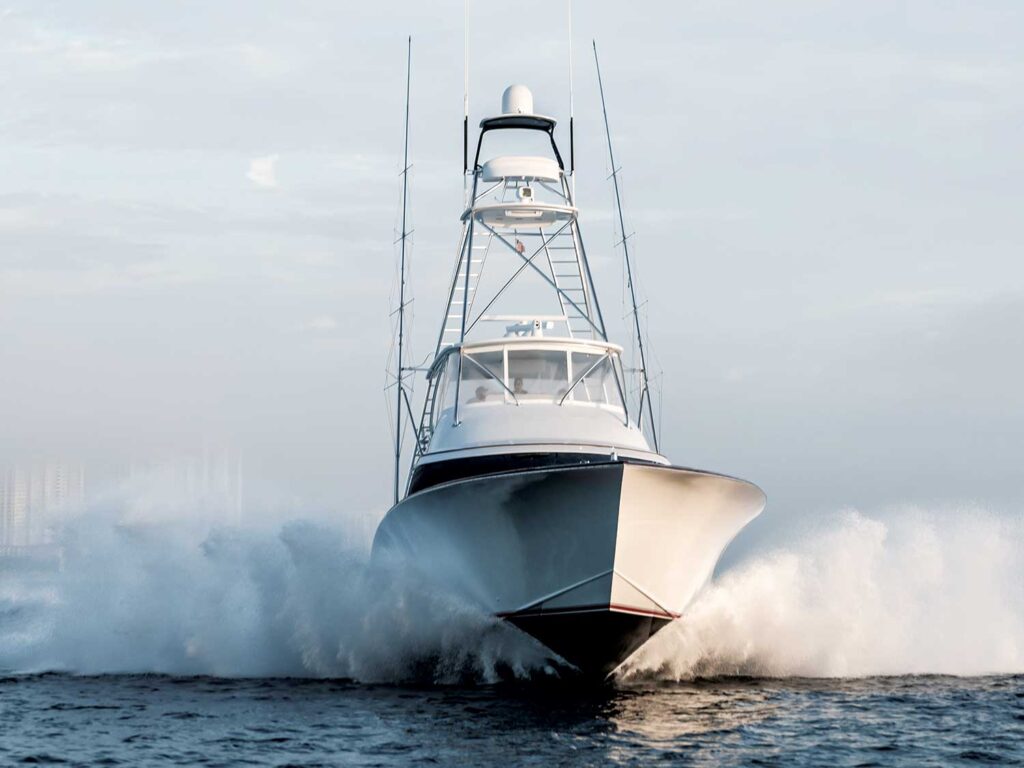
Special delivery: Sign up for the free Marlin email newsletter. Subscribe to Marlin magazine and get a year of highly collectible, keepsake editions – plus access to the digital edition and archives.
As we look forward to a new year of fishing in 2024, we’re also looking at a host of emerging technology in the marine industry. Electronics are always interesting to watch, as the systems become faster and more powerful, and the features more user-friendly, with a wealth of information available at our fingertips. Global access to high-speed internet is a potential game-changer. Safety equipment is another area that’s rapidly evolving, from low-light cameras for nighttime navigation and man-overboard rescues to faster responses with EPIRBs and other gear. Now is the ideal time if you’re considering an upgrade for your vessel.
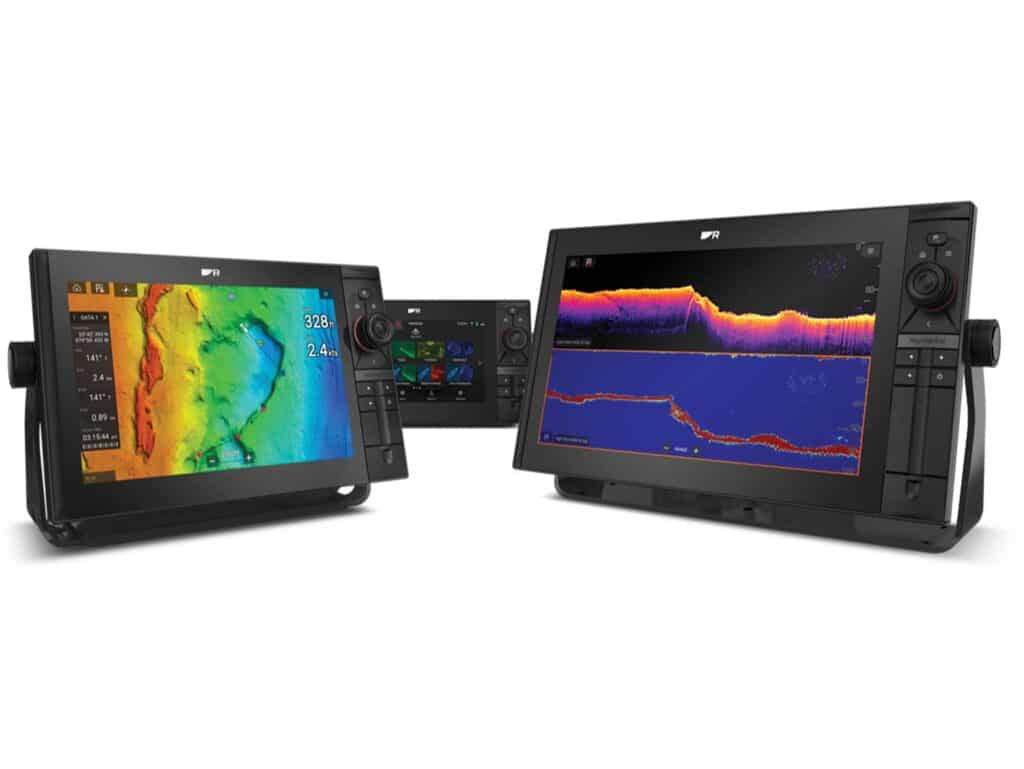
Raymarine
Axiom 2 Pro is the most powerful all-in-one Axiom system ever developed by Raymarine, with an ultra-fast six-core processor and an intuitive LightHouse 4 operating system. It is equipped with the all-new RealVision Max 3D sounder, which combines chirp DownVision, SideVision, and RealVision Max 3D channels, which all benefit from the faster ping rate and tighter beams, delivering exceptionally clear imagery of the bottom as well as fish holding tight to structure and the position of fish returns relative to the boat. The high-frequency chirp also has 600 watts of output power, significantly expanding the depth range to 1,200 feet. Axiom 2 Pro RVM also has a built-in 1 kW chirp sounder and supporting Airmar broadband transducers, giving the system the ability to clearly detect fish at depths up to 3,000 feet.
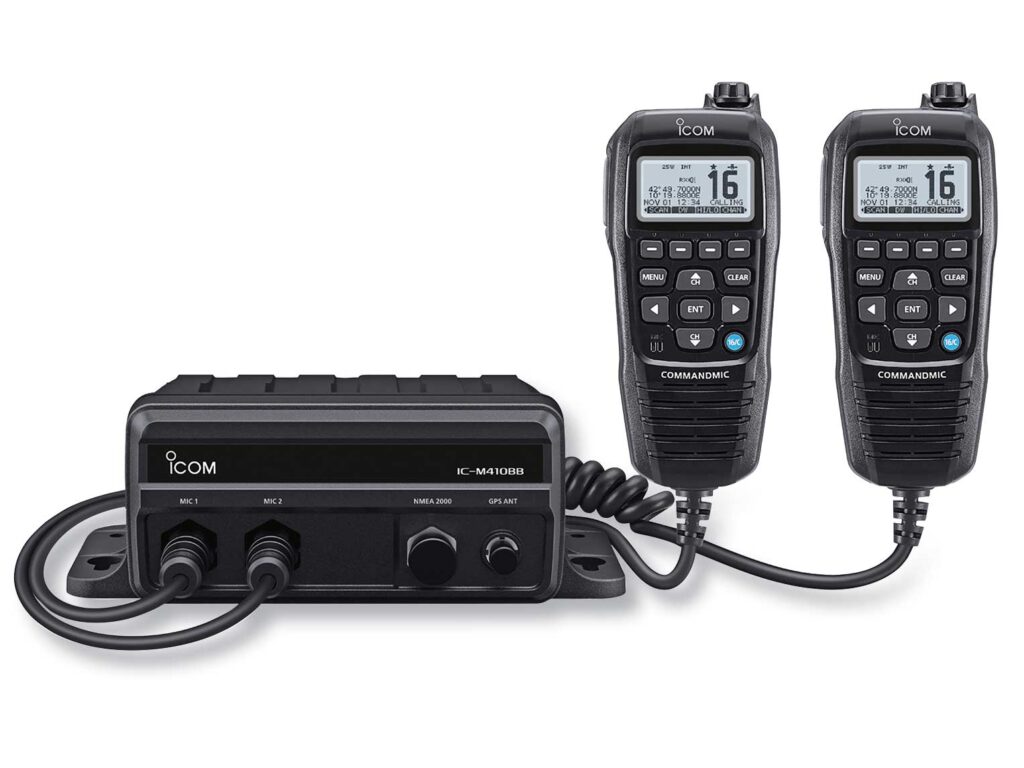
Icom
In a world where technology is ever-evolving, Icom continues to produce leading-edge, forward-thinking products, including the most innovative marine radios. Perfect for boats with an already crowded helm, the company’s new black-box VHF radios—the M510BB and M410BB—are space-saving solutions for vessels requiring multiple communication points. The M510BB allows up to three CommandMic stations, and the M410BB up to two. Install the black-box RF unit out of sight, and hang the CommandMic within easy reach, up to 60 feet away. Both radios carry in-demand features and functions such as an intercom, Class-D DSC distress button, internal GPS receiver, active noise canceling, one-way loudhailer, and NMEA 2000 and NMEA 0183-HS interfaces. The M510BB also includes additional features such as an integrated AIS receiver, two-minute voice recording and playback, and a DSC remote-control interface.
ACR Electronics
GlobalFix V5, the world’s most advanced EPIRB, has received authorization from the US Federal Communications Commission and approval from the US Coast Guard and is now shipping to distributors throughout the country. Already Cospas-Sarsat approved, the new beacon from ACR exceeds the new International Maritime Organization Maritime Safety Committee EPIRB regulations for vessels under SOLAS regulations. This next-generation EPIRB offers users the optimal chance of rapid rescue by providing the advantage of both local- and global-rescue options in an emergency.
The rugged, robust beacon, with a 10-year battery life, includes Global Navigation Satellite System positioning, a 406 MHz Cospas-Sarsat distress signal with MEOSAR compatibility, and 121.5 MHz local homing signal. Compatibility with Return Link Service alerting ensures that the beacon owner will receive a notification to confirm that the international satellite system has received the distress message and location. And by incorporating AIS within its beacons for the first time, ACR can now offer GlobalFix V5 EPIRB owners an additional method of communicating their location so that other nearby vessels will also be alerted in an emergency and can respond with immediate assistance. The EPIRB has an infrared strobe, as well as a visible light, to facilitate rescue in poor visibility or at night. The V5 unit is available with a Category I float-free bracket, offering full IMO regulatory compliance for SOLAS vessels, or a Category II manual-release bracket.
Airmar
A world leader in ultrasonic transducers and chirp technology, Airmar Technology Corporation has announced the launch of the digital SmartFlex diesel-flow meters. These state-of-the-art sensors are specifically designed to work seamlessly with Airmar SmartBoat modules to provide accurate fuel information through a precise analysis of flow, temperature and other parameters. The collected data is accessible on the NMEA 2000 network, allowing integration with various devices, including NMEA 2000 multifunction displays.
The SmartFlex diesel-flow meters are available in single- or dual-chamber models, perfect for different flow-rate requirements ranging from 50 to 4,000 liters per hour. The dual-chamber differential model combines two measuring chambers for supply and return fuel lines in a single housing, a design that reduces installation time and footprint while also eliminating the need for separate senders for feed and return lines. Installation of these CAN-based sensors does not require hard wiring or special settings, and configuration is simplified with the embedded browser-based software, SmartFlex View. Alloy and brass housing options are available, and all models come equipped with an onboard battery to ensure continuous measurement of fuel, even during power interruptions or unavailability.
AkzoNobel
AkzoNobel’s Awlgrip yacht-coatings brand is launching Awlcraft 3000, the latest topcoat to feature enhanced color technology to deliver truer and deeper colors for professionals and boat owners. Developed specifically for professional use, the system is coupled with AkzoNobel’s suite of digital color-matching tools that support owners in finding the right color for their boat. Sharing the next-generation color platform with Awlgrip HDT means it offers a deeper, truer, and more-consistent color performance while retaining the long-lasting, high-gloss finish for which its Awlcraft 2000 predecessor is celebrated. It also shares the tried-and-trusted application characteristics and reparative qualities that have made Awlcraft 2000 such an essential part of an applicator’s toolbox worldwide for over 25 years.
“There’s a reason why boaters proudly say they’ve had their vessels ‘Awlgripped,’ and that’s because it is a mark of quality that is recognized the world over,” says Matthew Anzardo, global yacht segment manager at AkzoNobel Yacht Coatings. “Over its 50-year history, Awlgrip has become the most immediately recognizable and trusted brand in the market. Its enhanced color platform ensures that colors pop like never before, resulting in a long-lasting, high-gloss finish that is guaranteed to turn heads.”
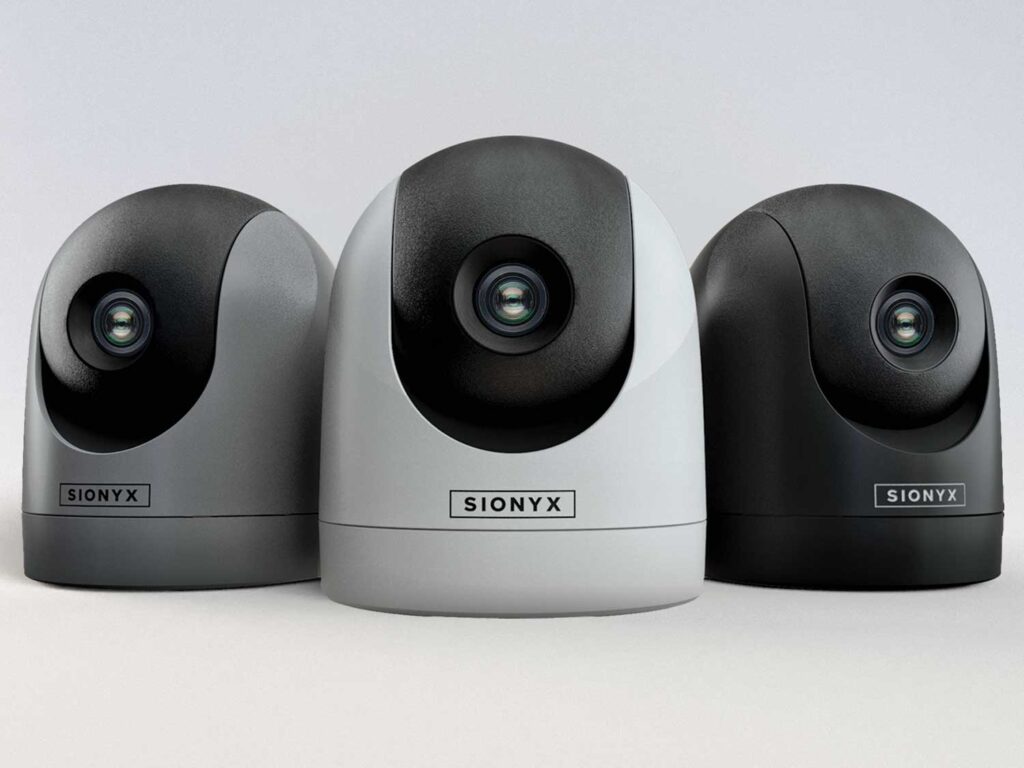
Sionyx
The Nightwave marine digital night-vision camera from Sionyx made a splash when it was introduced in late 2022, offering color night-vision capability at an accessible price. With some new upgrades for the upcoming season, captains can not only view its video directly from a boat’s MFD, but the camera also can now Wi-Fi-stream video to a tablet or phone with the Sionyx app and to a computer via USB connection. “There will be no doubt in anyone’s mind that this new technology will be a major upgrade to how people operate their boats at night,” says Michael Hauser, global maritime sales manager for Sionyx.
Nightwave is a first-of-its-kind color digital night-vision camera built around the company’s patented Black Silicon CMOS sensor, which offers unparalleled <1 millilux moonless starlight sensitivity. This advanced technology displays high-resolution color images and videos with exceptional clarity, allowing boaters to experience heightened visual acuity at night. Unlike thermal imaging, which relies on temperature gradients to create images, digital night vision employs state-of-the-art sensors and advanced image-processing algorithms to capture detailed and vibrant visuals, showcasing an impressive level of color accuracy, contrast, and depth perception. With Nightwave’s 44-degree stabilized field of view, mariners can spot obstacles and debris in moonless starlight without white light or expensive thermal cameras. The Nightwave has a rugged marine-grade housing with an IP67 rating that protects against water, sand, salt and dust, and the camera is dry-nitrogen-purged to prevent lens fogging.
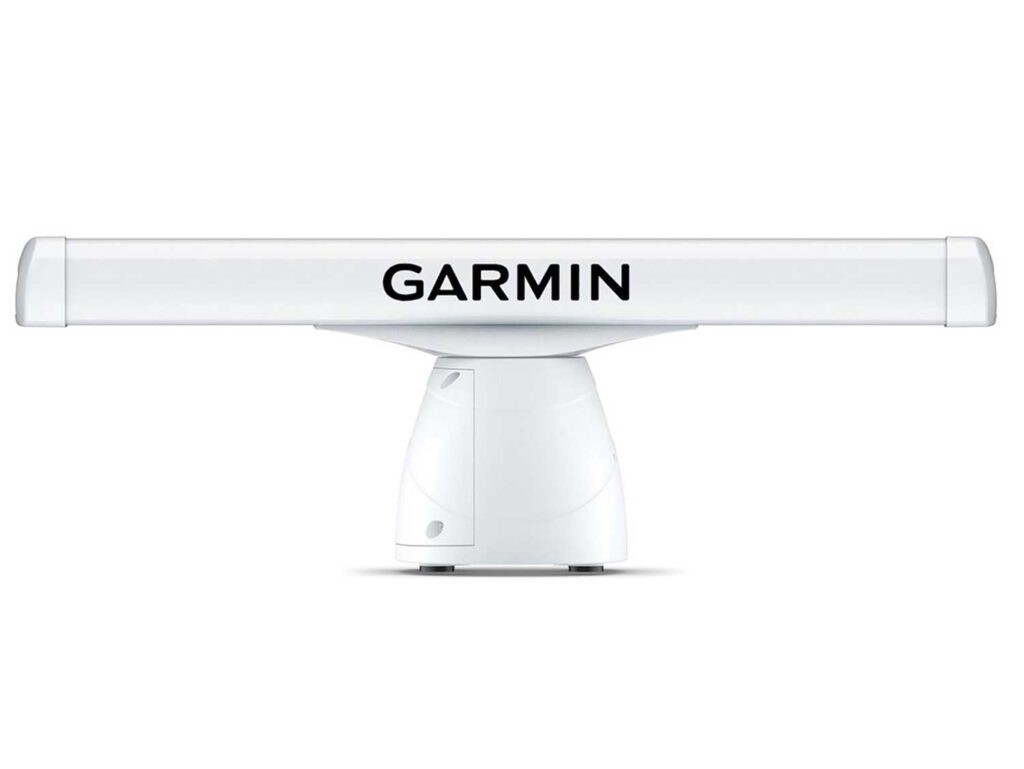
Garmin
New from a leader in marine electronics is Garmin’s GMR xHD3 series open-array radars. These systems combine high-definition imaging with the latest platform technology to deliver new levels of clarity and performance. A first for a Garmin magnetron radar, the xHD3 series incorporates scan averaging, which helps filter out sea clutter and interference on the display to provide enhanced consistent targets. The dual-range-with-overlay feature allows a single antenna to provide split-screen side-by-side images on a compatible chart plotter. The high-performance open-array series has options with 4, 12 or 25 kW of power, bringing commercial-grade weather performance to recreational boaters, with a 100-knot wind rating (the 4kW models need additional equipment to achieve this).
“We are excited to build on the foundation of our previous open-array radars and bring more premium features that will appeal to mariners of all types,” says Dan Bartel, Garmin’s vice president of global consumer sales. “Garmin’s new xHD3 open-array radars look far and wide to deliver an incredibly clear picture of what’s out there, maximizing situational awareness and giving you more peace of mind every time you leave the dock.”
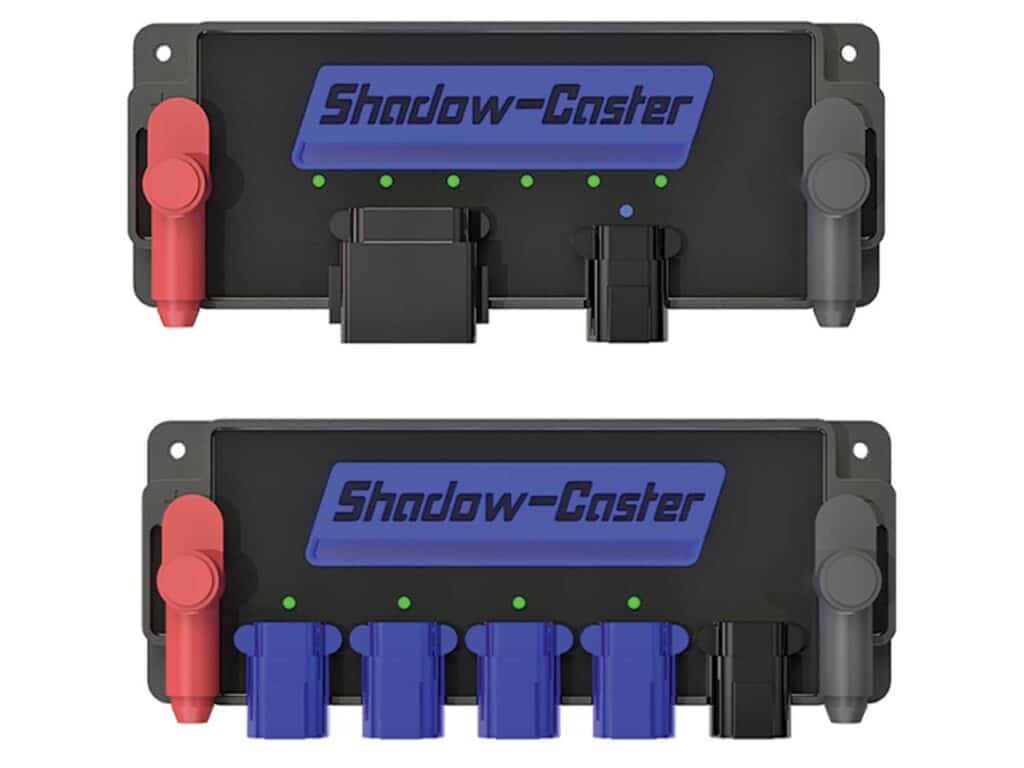
Shadow-Caster
Connecting and individually fusing underwater lights to a power source can be a time-consuming wiring nightmare. Shadow-Caster simplifies the installation process with a new, digitally controlled lighting switch—the SCM-PWR6—and a four-position power-control module, the SCM-PD4CH. Made in the US, Shadow-Caster power modules are compatible with 12- or 24-volt systems. They accommodate up to 10 amps per channel with digital over-current fault protection and individual self-healing fuses. A blue LED backlight indicates the power state, while green and red LEDs provide channel status. The compact housings are IP67 washdown-rated and have 5/16-inch power lugs with protection boots for mounting in a bilge or other wet locations.
The SCM-PWR6 is a six-channel digital switch module that provides the ability to control any six vessel lights or fixtures. Compatible with Shadow-Caster’s Light Commander Plus and its MFD lighting-control kit, it will also turn on and off other brands of lights through these devices or the company’s companion mobile app. Once connected, the SCM-PWR6 automatically populates Shadow-Net; a switch input allows for overriding the interface. Shadow-Caster’s four-position power-control module has four channels and is compatible with single-color and multicolor lamps; it’s recommended when installing two or more underwater lights. It can be used with a helm-mounted switch or none when using a compatible Shadow-Net controller.
GOST
Global Ocean Security Technologies, better known as GOST, is a world leader in marine security, tracking, monitoring, and video surveillance systems. The company recently combined its most popular products into a new, easy-to-install insurance-compliant offering: the GOST GNT-Evolution IDP hard-wired security package. This bundle provides marine-electronics installers, boatbuilders, and customers everything needed for an accessible yet robust tracking and monitoring system.
The GOST GNT-Evolution IDP is the newest version of GOST’s award-winning, globally capable wireless security, monitoring, and satellite-tracking system, designed with new hard-wired inputs to simplify installation where direct wire runs are preferred. The security system provides boaters with a rugged, marine-grade satellite-relay unit with real-time global tracking and security alerts at an affordable and accessible price point. Providing exceptional quality and value, the new package includes a satellite-tracking antenna; door, hatch, or engine cowling sensor; an infrared beam sensor designed to protect the exterior areas of the vessel; high-water sensor; siren and strobe; key fob for arm and disarm functions; and the GOST universal control unit. Boat owners who want to expand the system can add up to 32 wireless sensors, and the entire system can be controlled by either the included remote or any mobile device with the web-based Specter interface.
“For the past 18 years, GOST has been the leader in the maritime security and tracking market by setting the standards for our demanding yacht owners,” says Jay Keenan, GOST president and CEO. “By bundling our most popular products together in an affordable, hard-wired base system, the new GNT-Evolution IDP hard-wired security package gives customers and boatbuilders the best of the best without anything superfluous. In addition, with the proven universal control unit driving the system, users can always add more to their system as their needs evolve. It’s always been a goal of ours to have a simple base package from which our users can build.”
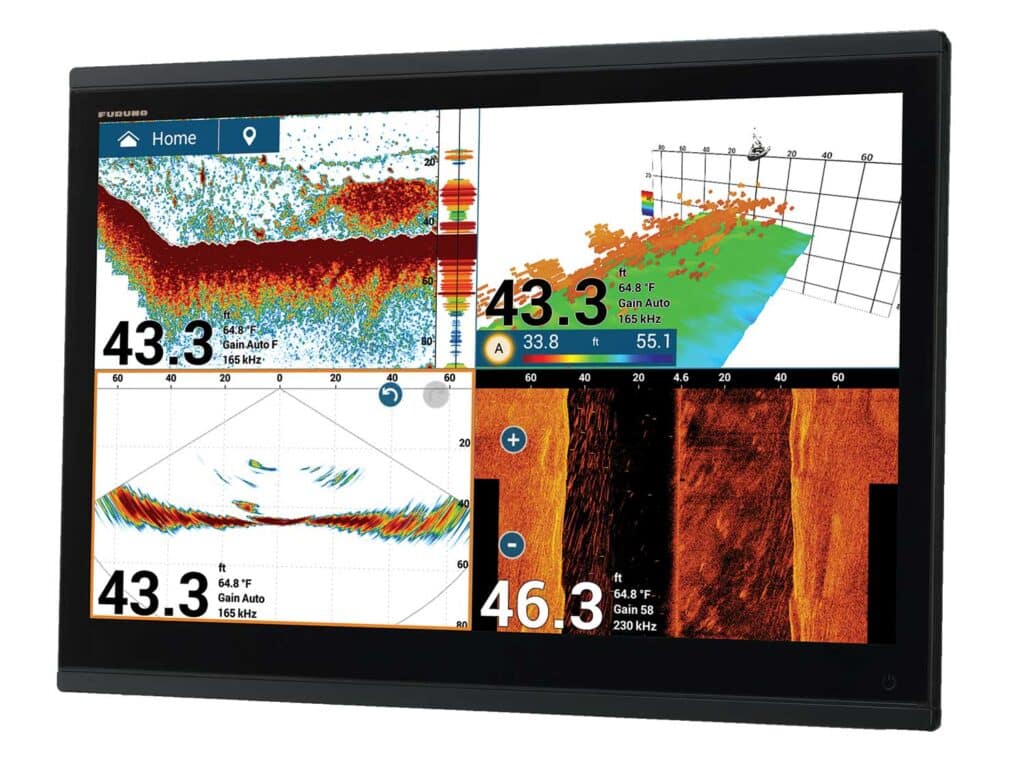
Furuno
Over the years, Furuno has done an excellent job listening to its customers by developing new software features and adding a smaller 9-inch display to its NavNet TZtouch3 product line. Now Furuno is responding to customer requests at the other end of the spectrum with the introduction of two new, extra-large 22- and 24-inch models. Aptly named TZtouchXL, these super-wide, full-HD multifunction displays include all of the features that make NavNet TZtouch3 a bestseller.
The TZT22X and TZT24X deliver on the qualities that make NavNet TZtouch3 a breeze to operate, plus you can split these large screens into six different windows. The edge-swipe feature makes finding what you need simple and intuitive. A single tap selects most options, so you’re never more than a swipe and tap away from the most commonly accessed features. TZtouchXL comes with 10 preset screen configurations, or you can quickly build your own custom displays with up to a six-way split-screen layout. The new front-mounted design of the TZT22X and TZT24X allows for side-by-side installation with zero spacing gap for an elegant and refined appearance.
“Our customers spoke, and we listened,” says Brad Reents, president of Furuno USA. “Owners of larger vessels have asked for all of the features of NavNet TZtouch3 in a bigger MFD, and we’re thrilled to deliver on that request. TZtouchXL packs all of the options that a captain could ask for into a larger display with the same simple and familiar interface. The edge-to-edge all-glass look of TZtouchXL will add to the elegance and sophistication of any helm, with all of the power, responsiveness, and ease of use that NavNet TZtouch3 is known for.”
Starlink
With a global constellation of approximately 3,660 SpaceX satellites in orbit, Starlink now offers a high-speed, low-latency broadband internet service with worldwide coverage. And because those satellites orbit close to Earth, they can transmit data faster than more-distant geostationary satellites, which reduces latency and improves network speeds on the ocean—you just need an unobstructed view of the sky.
Starlink is designed for self-installation and can be placed just about anywhere with a clear line of sight, bringing high-speed internet within reach even for those who venture well offshore or travel to remote locations.
High-speed connectivity enables Starlink customers to access navigation data in real time, continuously monitor weather conditions, and communicate with others, as well as for use in streaming and gaming. Download speeds range from 40 to 220 Mbps, and upload speeds range from 8 to 25 Mbps. The systems are designed for extreme weather conditions too.
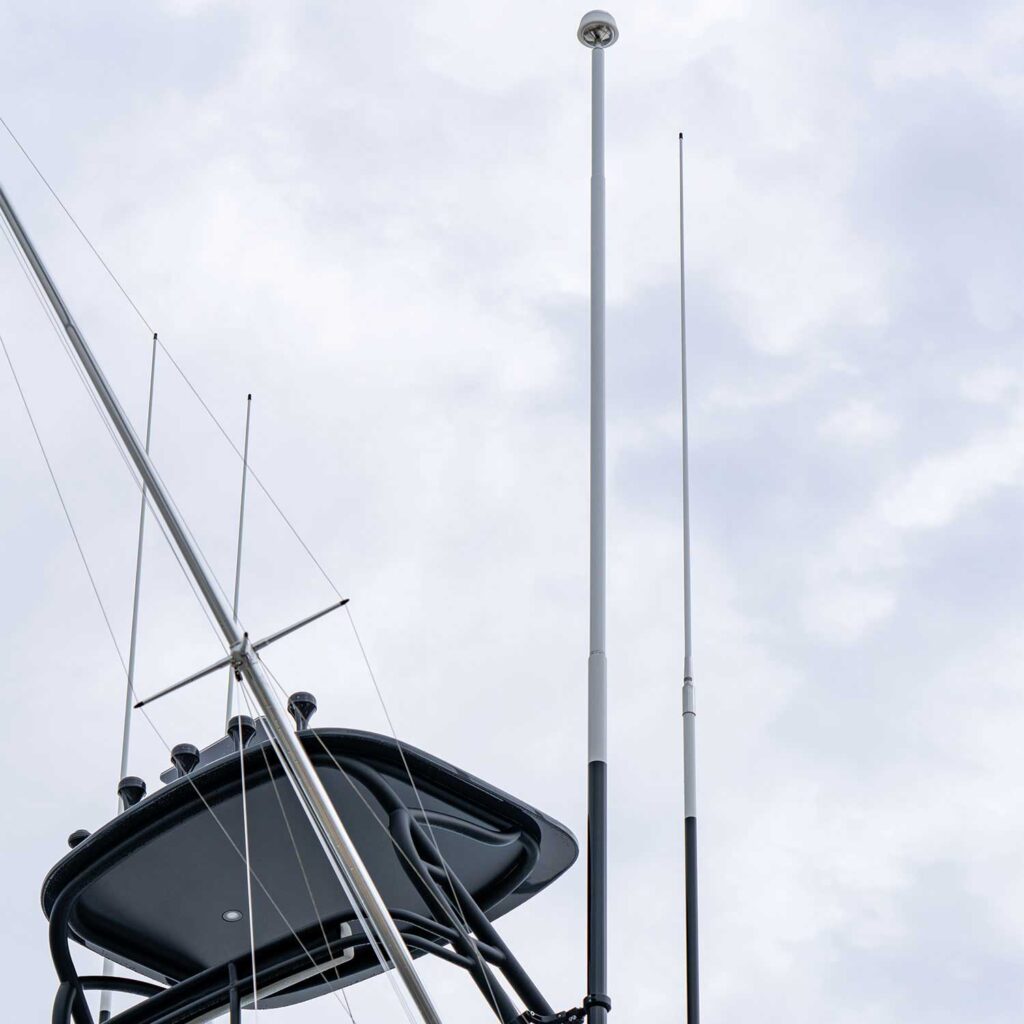
Dinnteco
Dinnteco’s DDCE is a patented electromagnetic-charge compensation device—a system that helps protect against atmospheric discharges and avoid the impact of a lightning strike on a protected vessel. Combining the installation of the DDCE with the Dinfils—a ground filter that guards against the electromagnetic pulse, or indirect effects of lightning—Dinnteco offers a complete solution for reducing the risks of the devastating effect of direct or indirect effects of lightning.
Atlantic Marine Electronics is the exclusive marine distributor for Dinnteco in the United States, Mexico, Panama and Costa Rica. “We’ve seen an increase in both the occurrence of lightning strikes and the severity of damage that’s being done in the marine environment,” says AME general manager, Todd Tally. “As ship systems become more sophisticated and interconnected, lightning strikes are having a greater impact.”
By slowly and continuously neutralizing electric charges, Dinnteco’s DDCE innovative lightning suppressor protects structures from lightning strikes. “Ultimately, the DDCE is a balancing device and a compensator of variable electric fields,” Tally says. “It’s constantly collecting the ions from the atmosphere and bringing them to ground while avoiding the creation of an ‘upward leader,’ which would result in a lightning strike.”
For sportboat applications, the DDCE is mounted on a custom carbon-fiber pole on top of the tuna tower. A second lightning suppressor called the DINEOL is necessary on the outriggers. Both the DDCE and the DINEOL guard against direct lightning strikes. A third element, a Dinfil, protects the boat against indirect strikes. “Most of your larger yachts will have two Dinfils, which will be connected to the grounding system of the boat,” Tally says. “We’re extremely excited about this product and believe it will be a true game-changer in our industry.”

SiriusXM Marine
A new Fish Mapping app will now be offered with SiriusXM Marine Fish Mapping subscriptions at no additional cost. The app will be available for download on iOS and Android phones and tablets, and will include all eight of its fishing features, plus a couple of features that aren’t available on the satellite service—ocean currents and historical data—overlaid on a chart with bathymetry. Both of these new features are valuable tools that captains can use to plan their next trip offshore.
